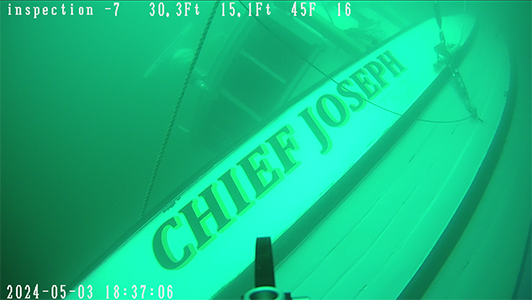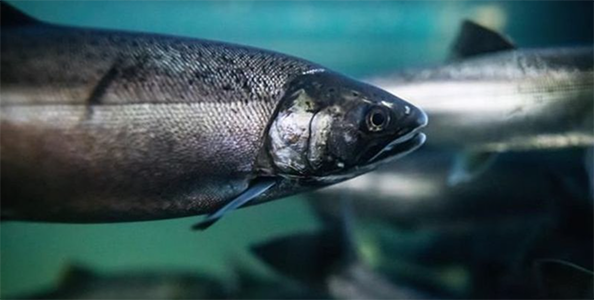||| FROM NEW YORK POST ||| REPRINT AT REQUEST OF ORCASONIAN READER
Last summer, the line for beloved Nantucket restaurant Black Eyed Susan’s would often snake down India Street — but waiting in line was worth it. A small, unpretentious and slightly offbeat space, it’s popular with both longtime visitors to the island as well as “year-rounders.”
This summer, however, co-owners Susan Handy and Jeff Worster were unable to open. Demand was not the issue — finding staff who were able to live on an increasingly expensive island was.
Black Eyed Susan’s was not the only one. A host of other Nantucket institutions did not open their doors this season, including: Fifty-Six Union, Keeper’s, the Pearl and the Boarding House. On a small island even five or six closures is devastating. Pair that with record-breaking numbers of visitors to the island, and it’s simply never been harder to get a restaurant reservation.
The struggle to get a table for dinner, however, is small potatoes relative to Nantucket’s other impending issues.
Automobile traffic on the island has never been worse, according to more than a few locals. Check-in lines at the airport (assuming your flight can even take off on time) often leave visitors baking in the sun for hours. A hotter-than-ever real estate market is pushing out long-term renters and lifelong locals alike.
And, perhaps above all else, the environmental impacts of putting so many people on such a 48-square-mile stretch of sand are starting to strain resources and harm its ecosystems.
Nantucket is on a collision course for disaster — and may soon become a case study for unsustainable tourism.
According to figures provided by the Nantucket Data Platform, an independent public info organization, the island has a year-round population of 19,900. The average summer population in 2021 swelled to 58,090, up from 34,430 in 2014. The town forecasts its summer population to exceed 80,000 by 2026.
In years past, Bostonians and New Yorkers dominated the island between Memorial Day and Labor Day, often taking ferries or “air taxi” services, and like clockwork those visitors would clear out after summer. Now, larger airlines such as JetBlue, Delta and United offer service well into October and sometimes November, extending the traditional 12 week summer high season late into fall.
“We used to be 90% air taxi and 10% large carriers, but now that has reversed,” said Noah Karberg, Nantucket’s assistant airport manager. “Today, 80% of airport customers actually come from other markets like Oakland, Calif., and Billings, Mont.”
Meanwhile, the real estate market surpassed a record $2.3 billion in sales volume in 2021, furthering the wealth divide between the island’s affluent vacation set, and its year-rounders.
“We do more and more work with less employees every single year,” said Tobias Glidden, a 10th-generation Nantucketer whose family owned Glidden’s Island Seafood, a fish market, which first opened in 1898. He feels strongly that landlords who have converted housing into short-term rentals have exacerbated the crisis.
“Homes are for people, they’re not businesses,” said Glidden. “Any home operating as a business in a residential area should be shut down. Homes are the foundation for society. If you’re willing to rent out your home, you better be willing to rent out your daughter and your wife because that’s what comes next.”
But for many homeowners its simple economics: Why rent out your house for $2,000 a month to a local, when you can rent it out for $10,000 a week for 12 or 16 weeks a year to vacationer?












My grandfather built a house on the Siasconsett (“S’consett”) bluff at the end of the 19th Century.. My parents summered us six children there until after WII (Think “Summer of ’42”) which my father sold for $12,00 after the war. Even then, houses were treated as Monopoly pieces. Below the village of S’consett was a broad beach upon which a sub-village of “hired help” lived. Storms have wiped it away, and the bluff my grandfather’s house was on has eroded, but the multi-million dollar house was saved, having been moved across the road.
One summer about ten years ago I went with a son and a few grandchildren to see tmy grandfather’s house. Coming n on the ferry and going through Nantucket Town, what Friday Harbor experiences when a ferry comes in is a faint candle compared to what happens in Nantucket when the ferry arrives.
In the 1970s, a word had to be invented for the changes imposed on what we remember as our environment: “solastalgia.” It is increasingly used first with grief, then with helpless frustration. The Visitors Bureau, aware of overuse and crowding that comes from what we have been taught is “success,” is working to sensitize our guests to what we have here, and the need for its preservation, which includes peace and civility as well as natural resources.
Meanwhile, it is essential that we broaden and strengthen our economy. There is a lot of talent here on our islands, and we need to make this a place that uor children and grandchildren can come home to.There are great challenges, affordable housing being a major one, but I believe that we can meet them.
Well said, Bill.
So why in the name of Paradise is San Juan County still officially and financially PROMOTING tourism??? Maybe it is inevitable that they will come, but…
My Mother’s first cousin owned a large cranberry farm on Nantucket. As children we visited the island many times and have fond memories of the sand dunes and multitudes of rabbits. The last time my wife and I visited the island the tourist population had exploded. Even in the off season it’s difficult to find a place to stay and impossible to find anything that is economical. I agree with Bill that we need to broaden our economy but not at the expense of degrading what makes Orcas Island,
namely our unique environment and our vibrant local community. Both are at risk unless we effectively manage tourism.
I am so relieved that we have returned to this topic. We’ve had a downright drought of negativity about tourism and the evils of anyone who is not a full-time resident ever coming to Orcas. This should reinvigorate the “anti-others” juices of the population. Making Orcas harder to access is the easiest way to save the island. Stop the ferry and close the airport and you’re assured of success. Just look how successful Waldron is with a hard to access approach-it does work!